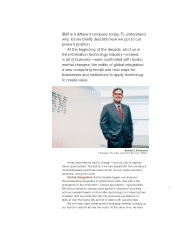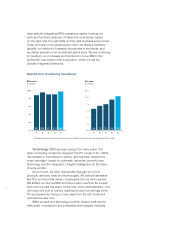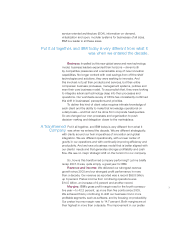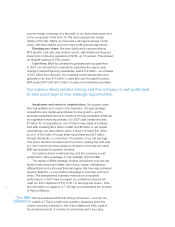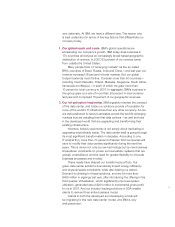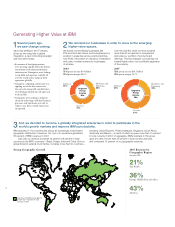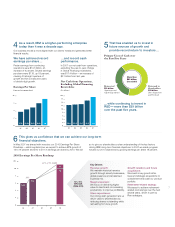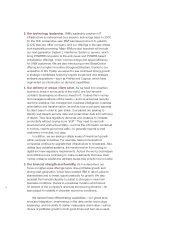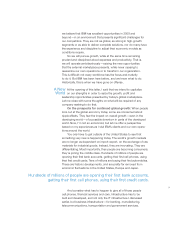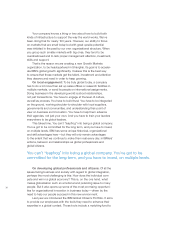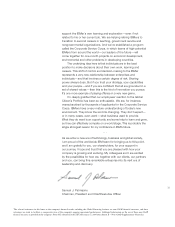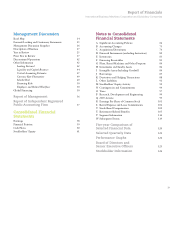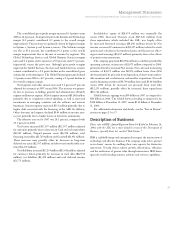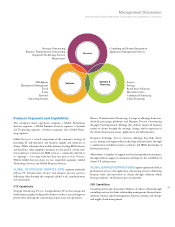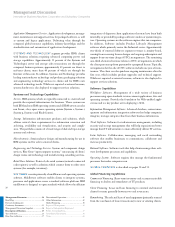IBM 2007 Annual Report Download - page 12
Download and view the complete annual report
Please find page 12 of the 2007 IBM annual report below. You can navigate through the pages in the report by either clicking on the pages listed below, or by using the keyword search tool below to find specific information within the annual report.§í
Your company knows a thing or two about how to build both
kinds of infrastructure to support the way the world works. We’ve
been doing that for nearly 100 years. However, our ability to focus
on markets that are small today but with great upside potential
was inhibited in the past by our own organizational structure. When
you group such smaller markets with big ones, they tend to be
overshadowed and to lack proper management attention, investment,
skills and support.
That is the reason we are creating a new Growth Markets
organization, to be headquartered in Shanghai. Its goal is to acceler-
ate IBM’s global growth significantly. I believe this is the best way
to ensure that these markets get the talent, investment and attention
they deserve and need in order to keep growing.
On local engagement: To be truly global today, a company
has to do a lot more than set up sales offices or research facilities in
multiple markets, or send its people on international assignments.
Doing business in the developing world is about relationships,
not just transactions. You have to engage at the level of culture,
as well as process. You have to build trust. You have to be integrated
on the ground, working shoulder-to-shoulder with local suppliers,
governments and communities, and understanding their point of
view on business and innovation. You have to help them advance
their agendas, not just your own. And you have to train your leaders
everywhere to be global leaders.
This takes time. You can’t “leapfrog” into being a global company.
You’ve got to be committed for the long term, and you have to invest,
on multiple levels. IBM has some unique historical, organizational
and skill advantages here
—
but they will only remain advantages
to the extent that we continue to make them real every day, in IBMers’
actions, behavior and relationships as global professionals and
global citizens.
On developing global professionals and citizens: Of all the
issues facing business and society with regard to global integration,
perhaps the most challenging is this: How does the individual com-
pete and win in a global economy? This is, on the one hand, what
makes globalization such an emotional and polarizing issue to many
people. But it also opens up some of the most promising opportuni-
ties for organizational innovation in business today
—
driven by the
need to help our people succeed in this new environment.
Last year we introduced the IBM Global Citizen’s Portfolio. It aims
to provide our employees with the tools they need to enhance their
expertise in a global context. Those tools include a matching fund to
You can’t “leapfrog” into being a global company. You’ve got to be
committed for the long term, and you have to invest, on multiple levels.



